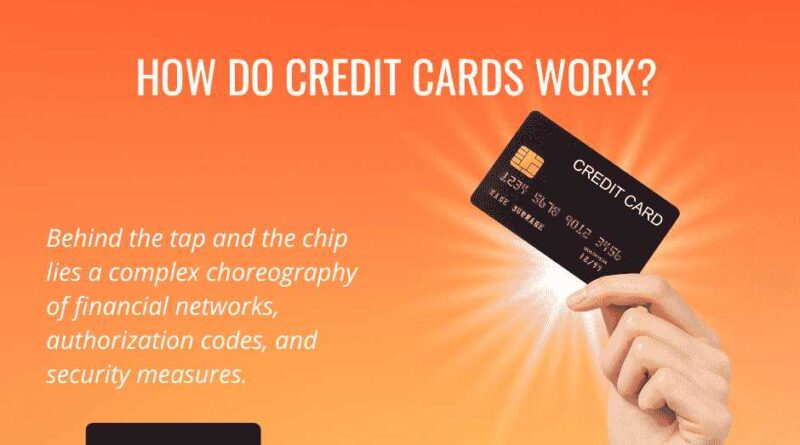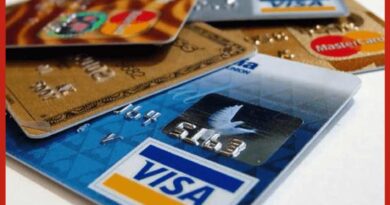How Do Credit Cards Work: Understanding the Mechanics
Introduction
In today’s fast-paced world, where cash transactions are gradually giving way to digital modes of payment, credit cards have emerged as versatile tools that offer both convenience and financial flexibility. These seemingly unassuming pieces of plastic possess the power to transform everyday purchases into secure and efficient transactions, shaping the way we navigate our financial lives.
But have you ever wondered how credit cards work? Beyond the simple act of swiping or inserting a card, a complex network of processes comes into play, seamlessly connecting merchants, cardholders, and financial institutions.
Components of Credit Card
- Card Number: The card number is a unique numerical sequence typically embossed or printed on the front of the card. It’s a primary identifier that is used in online and in-person transactions to link the card to the cardholder’s account.
- Cardholder’s Name: This is the name of the person to whom the credit card is issued. It’s typically embossed on the front of the card and helps verify the cardholder’s identity during transactions.
- Expiration Date: The expiration date indicates the month and year until which the credit card is valid. This helps ensure the security of transactions by requiring regular card updates.
- Security Code (CVV/CVC): The Card Verification Value (CVV) or Card Verification Code (CVC) is a three- or four-digit number printed on the back (or front for Amex) of the card. It adds an extra layer of security for online and phone transactions, as it’s usually not stored with the rest of the card information.
- Magnetic Stripe: The magnetic stripe is a black strip on the back of the card that contains encoded information about the cardholder and the account. Swiping through a card reader provides the necessary details for processing transactions.
- EMV Chip: EMV (Europay, Mastercard, and Visa) chip technology is a more secure alternative to the magnetic stripe. The small metallic chip on the front of the card generates a unique code for each transaction, making it harder for thieves to clone the card.
- Issuer’s Logo: This logo represents the financial institution that issued the credit card. It can be a bank, credit union, or other financial organization.
- Network Logo: The logo of the credit card network (Visa, Mastercard, American Express, etc.) indicates the network that processes the card’s transactions. These networks enable the card to be accepted worldwide at various merchants and locations.
- Contactless Symbol: Some credit cards feature a contactless symbol (a series of radio waves), indicating that the card supports near-field communication (NFC) technology. This allows for secure “tap and go” payments at compatible terminals.
- Signature Strip: The signature strip is located on the back of the card and provides space for the cardholder’s signature. While not as commonly used for verification as in the past, some transactions may still require a signature.
- Terms and Conditions: On the back of the credit card, you might find a brief overview of important terms and conditions associated with using the card, including customer service contact information, cardholder agreements, and dispute resolution procedures.
Together, these elements offer the data and security characteristics that the cardholder and the merchant need to complete secure and approved transactions.
Issuers and Networks
Issuers:
Credit card issuers are financial institutions, such as banks, credit unions, or other financial organizations, that provide individuals with credit cards. These institutions evaluate a person’s creditworthiness based on factors like credit history, income, and debt obligations before approving them for a credit card.
Networks:
Credit card networks are payment processing platforms that facilitate transactions between merchants, cardholders, and issuers. These networks enable credit cards to be accepted by a wide range of merchants, both domestic and international.
Some of the major credit card networks include Visa, Mastercard, American Express, and Discover.
These networks provide the technological infrastructure that allows transactions to occur securely and efficiently. When you make a purchase using a credit card, the merchant’s payment terminal communicates with the card network to verify the transaction and ensure that the funds are transferred from your issuer to the merchant’s account.
Credit Card Account
A credit card account is a financial arrangement between a cardholder and a credit card issuer (usually a bank or credit union). It allows the cardholder to borrow money up to a predetermined credit limit to make purchases, pay bills, and perform other transactions.
Key Components of a Credit Card Account:
- Credit Limit: The credit limit is the maximum amount of money that you’re allowed to borrow using your credit card. It’s determined by the credit card issuer based on factors such as your credit history, income, and financial stability. Exceeding your credit limit can result in fees or declined transactions.
- Available Credit: This is the remaining amount of credit you have available to use within your credit limit. As you make purchases, your available credit decreases, and it increases as you make payments toward your balance.
- Statement Balance: The statement balance is the total amount you owe to the credit card issuer at the end of the billing cycle. It includes all the purchases, cash advances, fees, and interest that you’ve accumulated during that period.
- Minimum Payment: The minimum payment is the smallest amount you’re required to pay by the due date on your credit card statement to keep your account in good standing. However, paying only the minimum can result in higher interest charges and an extended repayment period.
- Grace Period: The grace period is the time between the end of the billing cycle and the payment due date. If you pay your statement balance in full within this period, you won’t be charged interest on your purchases. Grace periods typically last around 21 to 25 days.
- Interest Rate (APR): The Annual Percentage Rate (APR) is the annual interest rate you’ll be charged on any unpaid balance if you don’t pay your statement balance in full. Credit cards often have different APRs for purchases, cash advances, and balance transfers.
- Billing Cycle: The billing cycle is the period of time during which your purchases and transactions are recorded for your credit card statement. It’s usually around 30 days.
- Statement: A credit card statement is a monthly summary of your transactions, charges, payments, and other account activity. It also includes the minimum payment due and the due date.
- Due Date: The due date is the date by which you need to make your credit card payment to avoid late fees and maintain a positive credit history.
- Fees: Credit card accounts may have various fees, such as annual fees, late payment fees, cash advance fees, and foreign transaction fees.
Billing Cycle
A billing cycle is the period of time during which credit card transactions are recorded and accumulated for the purpose of generating a credit card statement. It typically lasts around 30 days, but the specific length can vary depending on the credit card issuer. The billing cycle is important because it determines when your statement is generated and when your payment is due.
Key Aspects of a Billing Cycle:
- Start Date: The billing cycle starts on a specific date. Transactions made after this date will be included in the next billing cycle.
- End Date: The billing cycle ends on another specific date. Transactions made up until this date are included in the current billing cycle.
- Statement Date: The statement date is the day on which the credit card issuer generates your monthly statement. It’s usually a few days after the end of the billing cycle. Your statement will include all transactions within that billing cycle.
- Payment Due Date: The payment due date is the date by which you must make at least the minimum payment on your credit card balance to avoid late fees and potential negative effects on your credit history.
Credit Card Statements
A credit card statement is a summary of all the transactions and account activities that occurred within a specific billing cycle.
It provides a comprehensive overview of your spending, payments, fees, and other charges. Credit card statements are typically available both online and in paper form, depending on your preferences and the practices of your credit card issuer.
Key Information on a Credit Card Statement:
- Account Summary: This section provides an overview of your current balance, credit limit, available credit, and any pending transactions.
- Transaction Details: The statement lists all transactions made during the billing cycle, including purchases, cash advances, balance transfers, and any fees charged.
- Interest Charges: If you carried a balance from the previous billing cycle or made cash advances, the statement will show the interest charges that have been applied.
- Minimum Payment Information: The statement specifies the minimum payment amount required by the due date to keep your account in good standing. It also includes information about how long it would take to pay off your balance by making only the minimum payments.
- Payment Due Date: The due date is prominently displayed on the statement, reminding you of when your payment is required.
- Rewards Summary: If your credit card has a rewards program, the statement may include a summary of any rewards earned during the billing cycle.
- Contact Information: The statement provides customer service contact details in case you have questions or concerns about your account.




